10 places in Europe to visit after the pandemic
Last Saturday, the Guardian featured twenty pieces written by authors, travel writers and journalists on the places they were longing to go. Inspired by their reverie, I started daydreaming about the places I am longing to go. The realist in me quickly took charge, so I focused my reverie on those places in Europe that I would like to visit (or visit again) once the pandemic is over. So, here is the list of my top 10 places in Europe to visit after the pandemic:
-
Skyros (Greece)
Skyros is my favourite Greek island, which I last visited last summer, and I hope to visit again this summer (COVID permitting of course).
Skyros is the largest and southernmost of the Sporades islands (the other three of the group are Skiathos, Skopelos, and Alonissos). It is located in the centre of the Aegean, east of Evia (or Euboea, the second largest Greek island, and the 16th largest of Europe) and north of the Cyclades.
Hora is the capital and main settlement of Skyros. Built amphitheatrically on the slopes of a 179-meter-high hill, Hora offers panoramic views of the Aegean Sea.
On the east coast of the island and within walking distance from Hora, there’s the long and sandy beach of Magazia (the southernmost part) and Molos (the northernmost part). Home to many beach restaurant-bars and seaside taverns, this beach offers a wonderful view of Hora. Halfway between Molos and the beach of Gyrismata, there’s the bar ‘Anemomylos’, one of my favourites on the island.
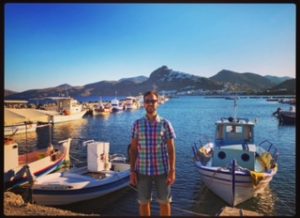
If you want to read more about Skyros, then check out my post ‘Traveling around Skyros with a local’.
2. Iceland
From Skyros, let’s now fly over Europe and land to the Land of Fire and Ice. The second largest island of Europe (in case you’re wondering, Great Britain is the largest one) happens also to be the most sparsely populated country in Europe, as well as a country I am yet to visit.
Fascinated by the magnificent landscapes depicted in Icelandic films and TV series, I would like to go on a road trip from the capital Reykjavik to Akureyri in the north and Selfoss in the east. In fact, driving along the 1,322-kilometre-long Route 1 or Ring Road (Þjóðvegur 1 or Hringvegur, in Icelandic) has been one of my dreams for quite some time now, a dream that I hope will come true in the not-too-distant future. 2022 perhaps?
In the meantime, I can always go on a musical journey to Iceland, in the company of Ólafur Arnalds, Víkingur Ólafsson and Ásgeir, or read some crime novels set there. If you’re also a fan of the Nordic crime literature, I would strongly recommend those by Arnaldur Indriðason, Yrsa Sigurðardóttir and Ragnar Jónasson.
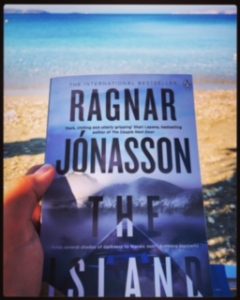
3. Faroe Islands
From Iceland, I would then take a ferry to the Faroe Islands, another part of Europe that I am yet to visit. Located in the North Atlantic, halfway between Iceland and Norway, the Faroes are an island group consisting of 18 major islands. Although this is an autonomous territory within the Kingdom of Denmark, the Faroe Islands are not part of the European Union.
With a population of just over 52,000 inhabitants, the Faroe Islands currently have the most Nobel laureates per capita worldwide. Over a century ago, in 1903, Niels Ryberg Finsen was awarded the Nobel Prize in Medicine and Physiology “in recognition of his contribution to the treatment of diseases, especially lupus vulgaris, with concentrated light radiation, whereby he has opened a new avenue for medical science”.
I hope I can visit the Faroes in the summer of 2022. Until then, I can always immerse myself into the Faroese culture from home, In fact, last year, during the first lockdown, I read my first Faroese crime novel, ‘Walpurgis Tide’, by Jógvan Isaksen. If you are also a fan of the Nordic crime literature, then I would strongly recommend it.
4. Tromsø (Norway)
Norway is one of my favourite countries. I was last there in December 2019, when I visited Tromsø to see the Northern Lights. Tromsø is the largest city in northern Norway, lying 350 km north of the Arctic Circle, about an hour and 50 minutes on the plane from Oslo. It is also the third-largest urban area north of the Arctic Circle (following Murmansk and Norilsk both in Russia). Despite its geographical location, or perhaps because of it, Tromsø attracts many visitors keen to observe the Aurora Borealis.
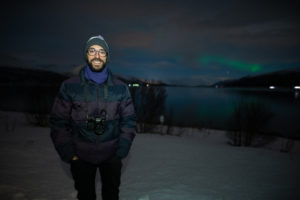
Having said that, Tromsø is a city that has much more to offer than the Northern Lights, and is worth visiting not only in the winter, but also in the summer.
Taking place every January, Tromsø International Film Festival features films from Norwegian and international filmmakers. It is due from 17 to 23 January 2022.
Tromsø is also home to quite a few annually held music festivals catering for a wide range of tastes in music. These include the Nordlysfestivalen (also known as the Northern Lights Music Festival), taking place in the winter (usually right after the Film Festival), the Tromsø Jazz Festival, taking place in the summer (due from 12 to 15 August 2021), and the Insomnia Festival, an electronic music festival held annually in October.
Being a cinephile and a live music enthusiast, I hope I visit Tromsø again, when one of these festivals take place.
There’s also the MidnightSun Marathon, which takes place in June (due on 19 June 2021), and the Polar Night Half Marathon, which takes place in January (due on 8 January 2022).
Meanwhile, if you want to read more about Tromsø, then check out my post ‘Chasing the Northern Lights in Tromsø’.
5. Megève (France)
The word ‘ski’ originates from the Norwegian language; it actually comes from the Old Norse word ‘skíð’, meaning ‘stick of wood’. Despite that and my love for Norway, I am still to go on a ski holiday there.
So far, I have been on five ski holidays: in Méribel (France), Courchevel (next to Méribel), Zell am See (Austria), Cortina d’Ampezzo (Italy), and Megève (also in France). Of those, Megève was the most recent (right before the pandemic) and also my favourite.
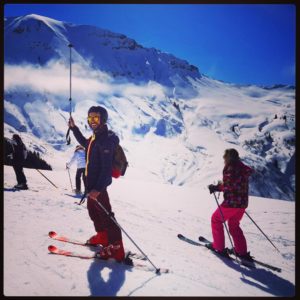
One of the things I loved in Megève was the fact that the ski lift to the slopes was right in the village centre, and I therefore did not have to take a bus to get there. Another reason why I loved this beautiful French resort is that there are many other things to do, other than skiing. Weather permitting, you can go hiking, or simply stroll around the village centre. Then, there’s the Megève International Jazz Festival (Festival International de Jazz à Megève), an annually held festival that takes place in the spring. Norah Jones, Gregory Porter and Macy Gray have all performed there in previous years. It is due from 31 March to 2 April 2022 (it was cancelled both this and last year).
In 2022, I hope I can combine a ski holiday in Megève with some live jazz music there.
In the meantime, if you want to read more about Megève, then check out my post ‘Megève: Ski, après-ski & jazz’.
6. Switzerland
By now, you will probably know that I am a huge fan of jazz music. Switzerland may be most famous for chocolate, watches and army knives, but it is also home to quite a few jazz festivals. No wonder why Switzerland is among my top 10 places in Europe to visit after the pandemic.
I would particularly like to visit in the summer, when several renowned jazz festivals take place. These include the Ascona Jazz Festival (Ascona is a beautiful town lying on the Swiss shores of Lake Maggiore in the Italian-speaking canton of Ticino), the Lugano Estival Jazz (a free-to-attend jazz festival with open-air concerts taking place in Piazza della Riforma, in Lugano, the ninth-largest town in Switzerland, on the shore of the lake of the same name) and the Montreux Jazz Festival, the second-largest annual jazz festival in the world (after the Montreal International Jazz Festival). It is held annually in early July in Montreux, a town lying on the shores of Lake Geneva at the foot of the Alps.
The Ascona Jazz Festival is due from 24 June to 3 July 2021, whereas the Montreux Jazz Festival is due from 2 to 17 July 2021 (so they can be easily combined). The dates for the Lugano Estival Jazz are yet to be announced.
7. Burgenland (Austria)
Neighbouring Austria is another beautiful landlocked Alpine country, bordered by a total of eight countries: Germany to the northwest, Czechia (Czech Republic) to the north, Slovakia to the northeast, Hungary to the east, Slovenia and Italy to the south, and Switzerland and Liechtenstein to the west. It is made up of nine federated states: Vienna, Lower Austria, Upper Austria, Styria, Tyrol, Carinthia, Salzburg, Vorarlberg and Burgenland.
This year, Burgenland celebrates 100 years from when it became part of the Republic of Austria. Although I have visited the country quite a few times in my life, I’ve never visited this easternmost state. I would particularly like to visit Burgenland in the summer, to attend one of the many classical music festivals taking place there.
The Lockenhaus Chamber Music Festival (Kammermusikfest Lockenhaus) turns 40 this year; it is due to take place from 8 to 17 July. Located in the state of Burgenland and close to the Hungarian border, Lockenhaus is 115 km (1.5-hour drive) from Vienna and 250 km (2.5-hour drive) from Budapest, The town was actually part of Hungary until a hundred years ago. The festival was founded in 1981 with the concerts taking place in the Church of Saints Nicholas (Pfarrkirche zum Heiligen Nikolaus) or inside a medieval castle, known as the Ritterburg or simply the Burg.
Seefestspiele Mörbisch is an operetta festival due to take place from 8 July to 14 August 2021. Mörbisch am See is a town located on the shore of Lake Neusiedl, in the state of Burgenland and very close to the Hungarian border. The stage is directly on Lake Neusiedl and is the largest open-air opera stage in the world.
Opera in the Quarry (Opernfestspiele St. Margarethen) is due from 14 July to 21 August 2021, when Giacomo Puccini’s opera ‘Turandot’ will be performed at the 1st-century Sankt Margarethen Quarry. The town of Sankt Margarethen is located in the state of Burgenland, near Eisenstadt, and close to the Hungarian border.
Realistically speaking, I don’t think I’ll attend any of these festivals this year. But, I can always daydream…
8. Florence (Italy)
An alternative to those classical music festivals in Burgenland would be the New Generation Festival, which is held annually in Florence, Italy. It was founded in 2017 and it takes place at the Palazzo Corsini Al Prato. It features opera, jazz, and classical music performances, as well as DJ sets.
The New Generation Festival provides the perfect excuse to visit the capital of Tuscany and experience what the Italians call ‘la dolce vita’. So far, I’ve been to Florence several times, and every time I enjoyed the city a little bit more. I remember strolling around the beautiful city centre trying to plan my meal times, so that I could dine at as many restaurants as possible, and have as much gelato as possible between or after my meals (quite a task, but this is la dolce vita after all!).
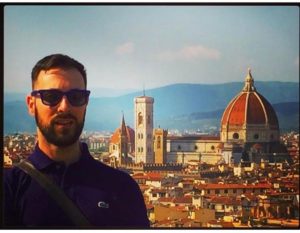
In the meantime, if you want to read more about Florence, then check out my post ‘Summer in Florence: top 7 tips‘.
9. Nantes (France)
A year ago, not long before Europe went into lockdown, I visited my friend Marie, who lives in Nantes, a vibrant city in west France (not exactly on the coast, but not too far either). Although Marie has been living there for over ten years now, this was my first ever time in Nantes. I promised that it wouldn’t be the last. In fact, I promised I’d come back either in August or September, when several music festivals take place there. Of course, this didn’t happen last year, due to the wider circumstances, as well as personal reasons.
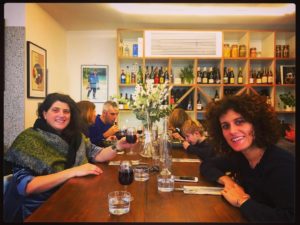
Les Rendez-vous de l’Erdre is a jazz festival taking place at the end of the summer (due from 23 to 29 August 2021) in Nantes and other nearby towns (Nort-sur-Erdre, Petit Mars, Sucé-sur-Erdre, La Chapelle-sur-Erdre, Carquefou, Blain, Guenrouët, Saffré, Le Gâvre, Les Touches et Saint-Mars-du-Désert) where the River Erdre flows through. All the concerts are free to attend. Then, there’s the Scopitone Festival, which takes place in September and features exhibitions, workshops and electronic music gigs (live performances and DJ sets).
Since Marie is getting married in August 2021 (but not in Nantes), I don’t think I’ll visit Nantes this year. Maybe in 2022…
In the meantime, if you want to read more about Nantes, then check out my post ‘Top 7 tips for an unforgettable weekend in Nantes‘.
10. Germany
There are so many other destinations that I would like to add to this list of my top 10 places in Europe to visit after the pandemic. Yet, I will conclude the list with Germany, a country that I have not visited in quite some time now, although some of my closest friends live there (in Dortmund, Munich and Stuttgart). In fact, one of my favourite trips to Germany was in December 2015, when I visited my friend Fofi in Stuttgart. That was not the first time I visited Germany during the festive season, and it certainly won’t be the last. Provided that there won’t be any travel restrictions later this year, I promise I will be back in Germany in December to restock with marzipan stollen and lebkuchen and catch up with my friends over some glühwein. Próst!
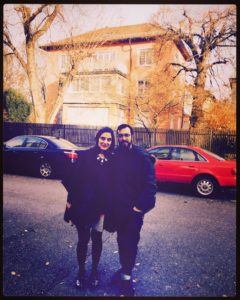
Alex
(the Traveling Psychiatrist)